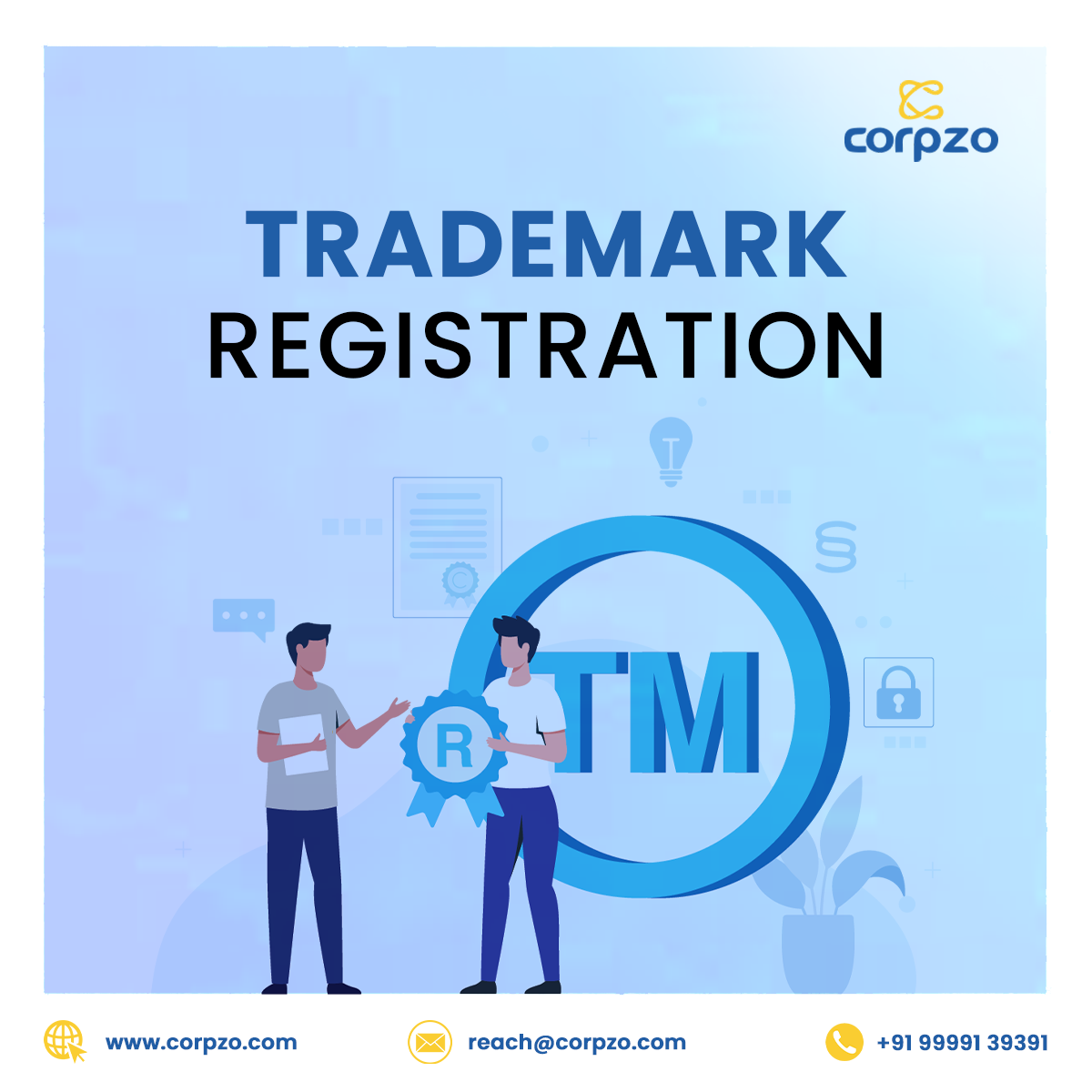 Trademark is a Special or Unique Symbol or Word designed and used to Represent a Company, Business organisation or its products that cannot be used by another company or Business organisation. Trademark registration is crucial process in India to Protects a BRAND’s Unique Identity, which covers a company’s logo, name or tagline. The Process of Trademark Registration includes checking Uniqueness, publishing in Trademarks Journal and provides 10 years of protection, which can be Renewed and Secures Brand Value and Recognition.
Trademark is a Special or Unique Symbol or Word designed and used to Represent a Company, Business organisation or its products that cannot be used by another company or Business organisation. Trademark registration is crucial process in India to Protects a BRAND’s Unique Identity, which covers a company’s logo, name or tagline. The Process of Trademark Registration includes checking Uniqueness, publishing in Trademarks Journal and provides 10 years of protection, which can be Renewed and Secures Brand Value and Recognition.
Trademark is categorised in 45 classes in India and all the goods and services are categorised across these 45 Classes for example: Class 9, Which includes computer software and electronic, Class 41, which includes education & entertainment, Class25, which includes Clothing. During the Trademark Registration person have to ensure that he/she can apply for a trademark online under these 45 applicable classes.
PROCESS OF TRADEMARK REGISTRATION IN INDIA:
- Trademark Search:
At First from the Trademark Registrar website, Trademark Professionals must conduct a Trademark Search of the Trademark Database in the beginning of trademark registration. It will Provide information about similar or identical trademarks that has been already filed with the Trademark Registry.
- Trademark Filing:
After searching the Trademark, the application is filed with the Trademark Registrar for Registration of a Trademark in the prescribed manner along with the Fee for trademark registration. Important Information for registration of a Trademark are:
- Trademark or the Logo
- Name and Address of the Trademark Owner
- Trademark Classification or Categorization of Trademark Class
- Description of Goods & Services
- Date Since the Trademark Used
- Allotment of Trademark Application:
After filing the trademark registration, a trademark application allotment number is provided within 2 working days. It can be also tracked online through the Online Trademark Search Facility.
- Vienna Codification:
Vienna codification or Vienna classification was established by the Vienna Agreement, 1973. It is an international classification of figurative elements of marks. Trademark Registrar apply the Vienna Classification to the trademark based on the figurative elements of marks.
While this work is in progress, the trademark application status usually reflects as “Sent for Vienna Codification”.
- Trademark Examination Process and Post Examination Procedures:
After Filing and Vienna Codification, Registrar will examine it and prepare an examination in writing and will send a copy of it to the applicant with 30 days to let them know whether the Registry wants to refuse or conditionally accept the application and shall also include the materials by which he came to such a decision. Examiner has the ability to accept the trademark registration application and allow for trademark journal publication or object the trademark registration application.
If the trademark registration application is objected by the Trademark Officer, the trademark applicant has the right to appear before the Trademark Officer and address the objections.
If the Trademark Officer is satisfied with the justifications of the trademark applicant, the trademark would be allowed for trademark journal publication.
After the hearing process, in case if the examiner is fully satisfied, can accept the mark and forward it for publication in the Trademark Journal and in case the Trademark Officer is not satisfied can refuse the application if any objection is still there. The trademark applicant has the right to appeal the decision of the Trademark Officer before the Intellectual Property Appellate Board.
- Trademark Publication:
After the acceptance of the Trademark registration application by the Trademark Registrar, the proposed trademark is published in the Trademark Journal.
The trademark journal is published weekly and contains all the trademarks that have been accepted by the Trademark Registrar. Once the trademark is published in the trademark journal, the public have an opportunity to object the trademark registration, if they believe they will be damaged by that registration.
If there are no objections filed within 90 days of that publication, the mark will typically be registered within 12 weeks.
If the trademark registration application is opposed by a third-party, hearing will be called for by the Trademark Hearing Officer.
Both the trademark applicant and the opposing party have the chance to appear at the hearing and provide justifications for registration or rejection of the trademark application.
Based on the hearings and the evidence presented, the Trademark Hearing Officer will determine if the trademark registration application should be accepted or rejected. The decision of the Trademark Hearing Officer can also be challenged by escalating to the Intellectual Property Appellate Board.
- Registration of the Trademark:
This is the last step of the registration Process to get the Certificate of Registration. If there is No Objection or Oppositions for the trademark application and all legal process related to Objection or Opposition are cleared, the applicant will receive the Trademark Registration Certificate and once the certificate is issued the trademark is considered to be a registered trademark of the owner.
Documents and Important Details and Information Required for Trademark Registration are as follows:
- Name of an Applicant
- Type of Business
- Objectives of Business
- Brand/ Slogan /Logo Name
- Registration Address
- Identification proof of the signatory
- Signed Form-48
- Address of the Signatory
- Proof of Business (Depends on the Business Type)

